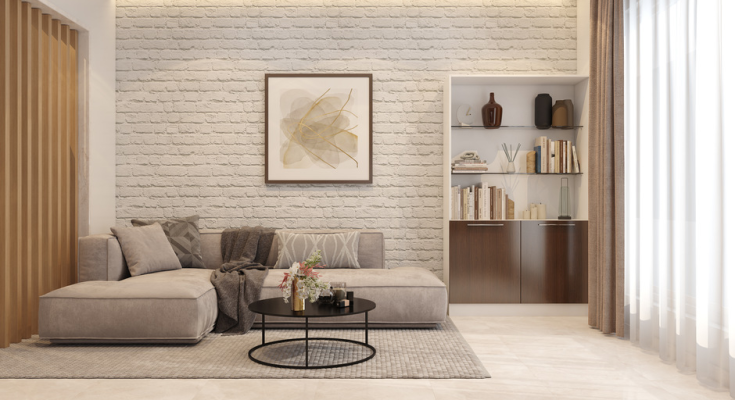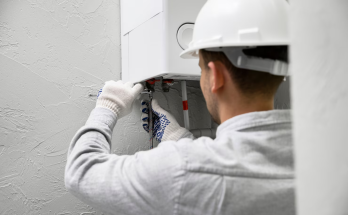When it comes to transforming the look and feel of your interiors, most people think of color first. But what if you could add depth, character, and a tactile element to your walls? That’s where texture comes in. This creative and functional design choice not only adds personality to plain walls but also helps hide imperfections—making it a popular option in both residential and commercial spaces.
One of the most effective ways to achieve this unique effect is by using wall texture paint, a specialized type of paint that introduces dimension and flair to flat surfaces. Whether you’re planning a small room makeover or revamping your entire home, understanding the magic behind textured wall finishes can go a long way. Let’s explore how this paint works, the types available, and why it’s worth considering for your next interior design upgrade.
What is Wall Texture Paint?
Wall texture paint is a special type of paint formulated to create raised patterns or finishes on the surface. Unlike regular flat paint, texture paint adds dimension and tactile feel to the wall. It can be applied using various tools like brushes, rollers, trowels, or even sponges to achieve different effects.
What sets it apart is its ability to transform boring, flat surfaces into something visually dynamic and unique. From rustic swirls to refined geometric patterns, wall texture paint opens up endless possibilities.
Why Choose Wall Texture Paint?
Here are some compelling reasons to opt for wall texture paint:
1. Aesthetic Appeal
Texture paint adds drama and character to otherwise dull spaces. Whether you’re going for a modern, industrial, or earthy vibe, textured walls elevate the overall ambiance of a room.
2. Covers Imperfections
Old plaster, uneven surfaces, or minor cracks can be a nightmare with regular paint. Texture paint can mask these flaws effectively, saving you the trouble of redoing your entire wall.
3. Customization
Unlike wallpaper or tiles, wall texture paint gives you creative freedom. You can create custom patterns that suit your personality, making each wall a one-of-a-kind masterpiece.
4. Durability
Textured paint tends to be thicker and more robust. It is resistant to minor abrasions and can withstand the wear and tear of daily life better than ordinary paint.
Types of Wall Texture Paint
Choosing the right texture depends on your design goals and the room’s function. Here are the most popular types:
1. Sand Texture Paint
As the name suggests, it contains fine sand particles. It creates a gritty finish and is often used in hallways or entry areas to give a slightly rough and rustic feel.
2. Knockdown Texture
This style starts with a thick application of joint compound which is then “knocked down” using a trowel. It’s subtle, modern, and ideal for living rooms and bedrooms.
3. Popcorn Texture
Once common in ceilings, popcorn texture creates a bold, bumpy surface. Though slightly outdated, it’s still used in retro-style interiors.
4. Orange Peel Texture
This finish resembles the surface of an orange. It’s smoother than popcorn but still adds a hint of texture. It works well in contemporary and minimalist interiors.
5. Venetian Plaster
Venetian plaster gives a luxurious, marble-like effect to walls. It involves multiple layers of tinted plaster, buffed to a high sheen. This style is perfect for elegant, upscale environments.
Where to Use Wall Texture Paint
Wall texture paint isn’t limited to any one room. You can apply it strategically throughout your home:
- Living Room: Use a subtle knockdown or orange peel texture as an accent wall.
- Bedroom: Venetian plaster can create a calm and cozy ambiance.
- Dining Room: A sand texture can add a rustic, charming appeal.
- Hallways and Staircases: These high-traffic areas benefit from the durability of textured finishes.
- Ceilings: Add visual height and interest with textures like popcorn or swirl.
How to Apply Wall Texture Paint
Although hiring a professional is recommended for complex textures, smaller DIY projects are possible with the right tools and patience. Here’s a basic step-by-step guide:
- Surface Prep: Clean and patch up the wall. Remove loose paint or debris.
- Priming: Apply a primer for better paint adhesion.
- Mix the Paint: Stir well, especially if the texture elements have settled.
- Application: Use a roller, brush, or specialized tool depending on the texture.
- Dry Time: Allow ample drying time. Some finishes may require additional coats or sealing.
Pro Tip: Always test the texture on a small area before committing to the whole wall.
Maintenance Tips for Textured Walls
While textured walls are low maintenance, they do require some care:
- Dusting: Use a soft brush or microfiber cloth to remove dust from raised surfaces.
- Spot Cleaning: Mild soap and water can usually take care of stains. Avoid abrasive scrubbing.
- Repainting: When repainting, follow the same texture method for a consistent look.
Final Thoughts
Wall texture paint is more than just a decorative option—it’s a design solution that brings life and depth to plain spaces. Whether you’re looking to make a bold design statement or subtly hide imperfections, this versatile medium offers both form and function.
In today’s design landscape, where personalization and uniqueness are highly valued, wall texture paint offers a creative edge. It helps your space stand out without overwhelming the senses.So, next time you’re planning a renovation or even a minor upgrade, don’t just think about color. Think about texture—and let your walls tell a richer story.



